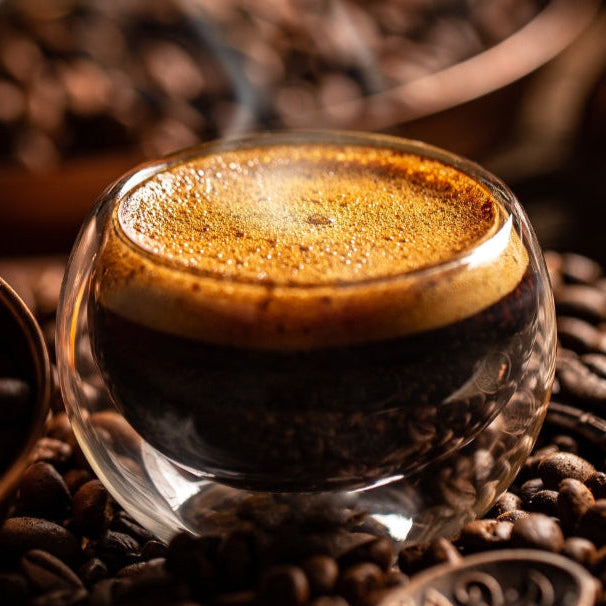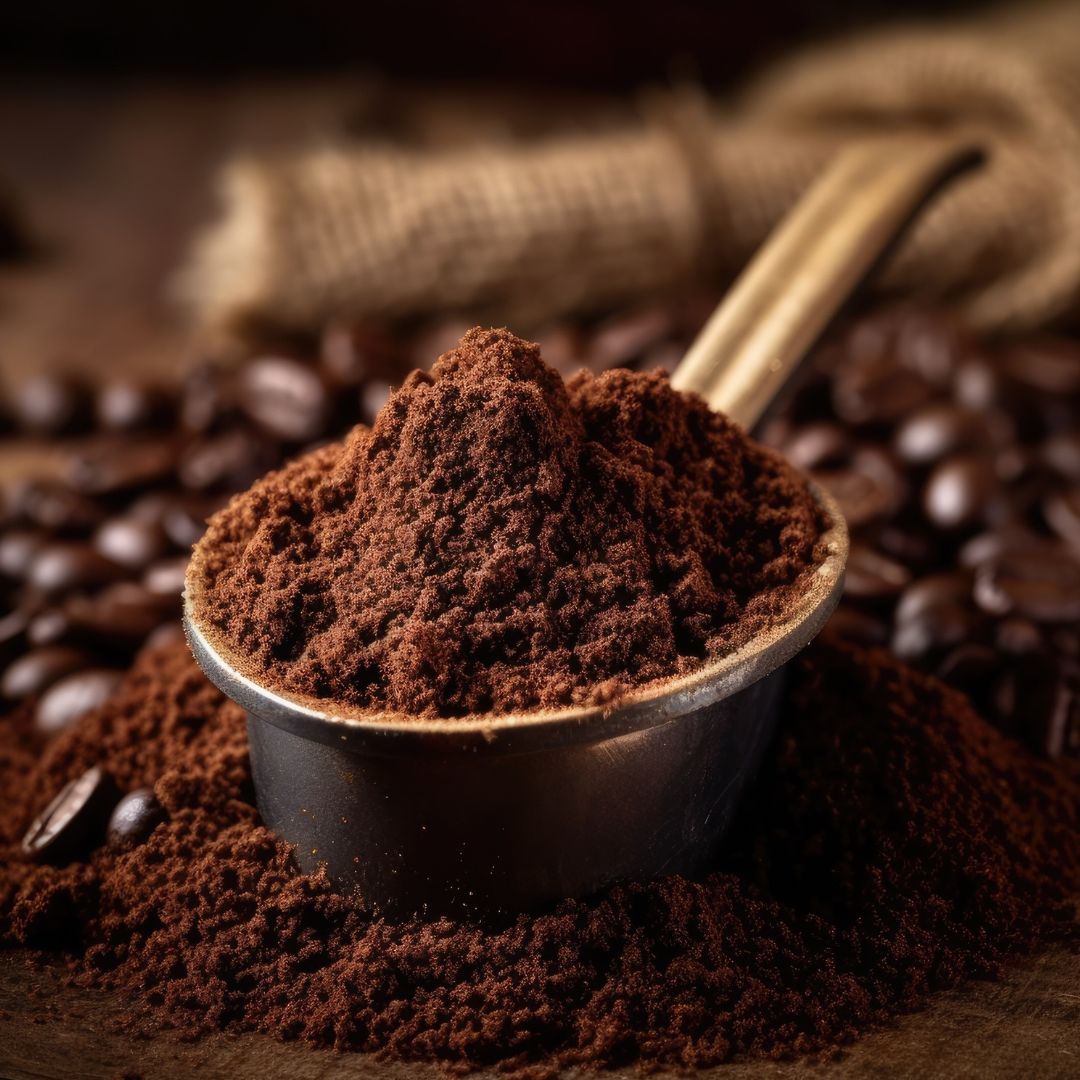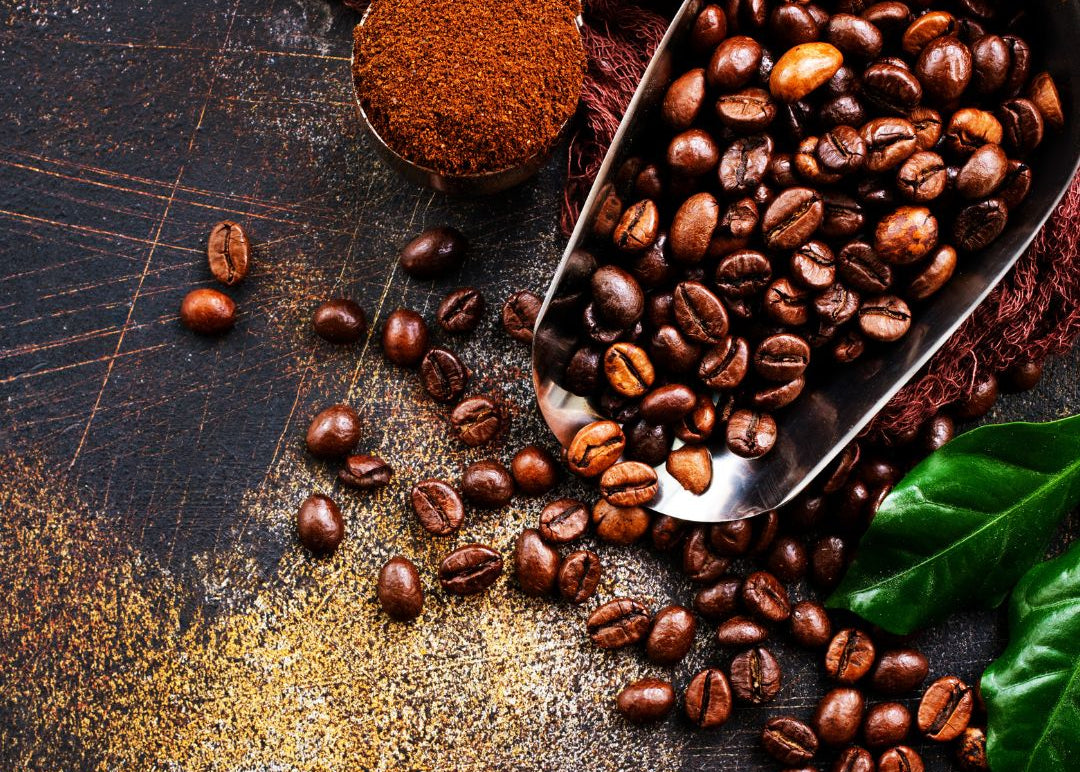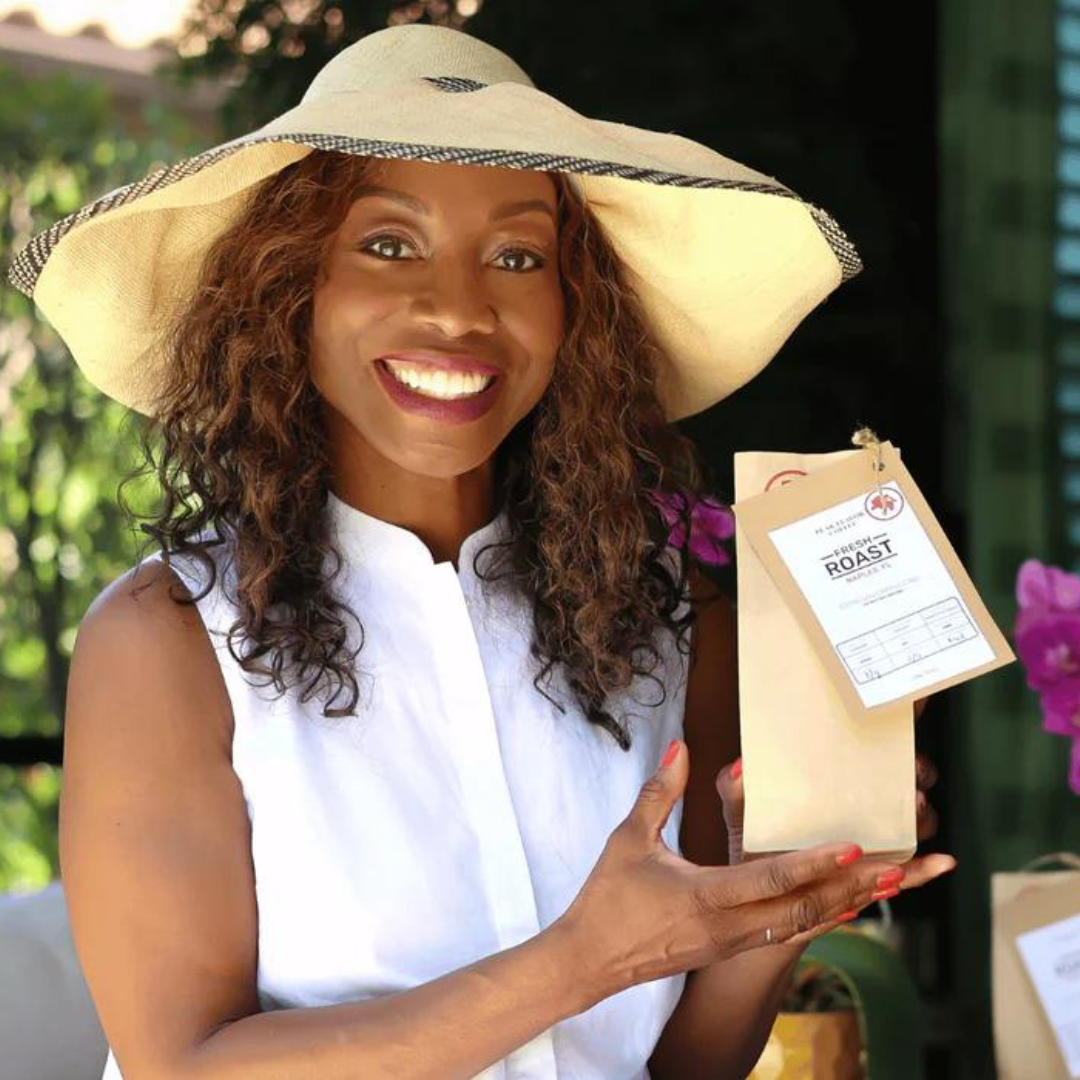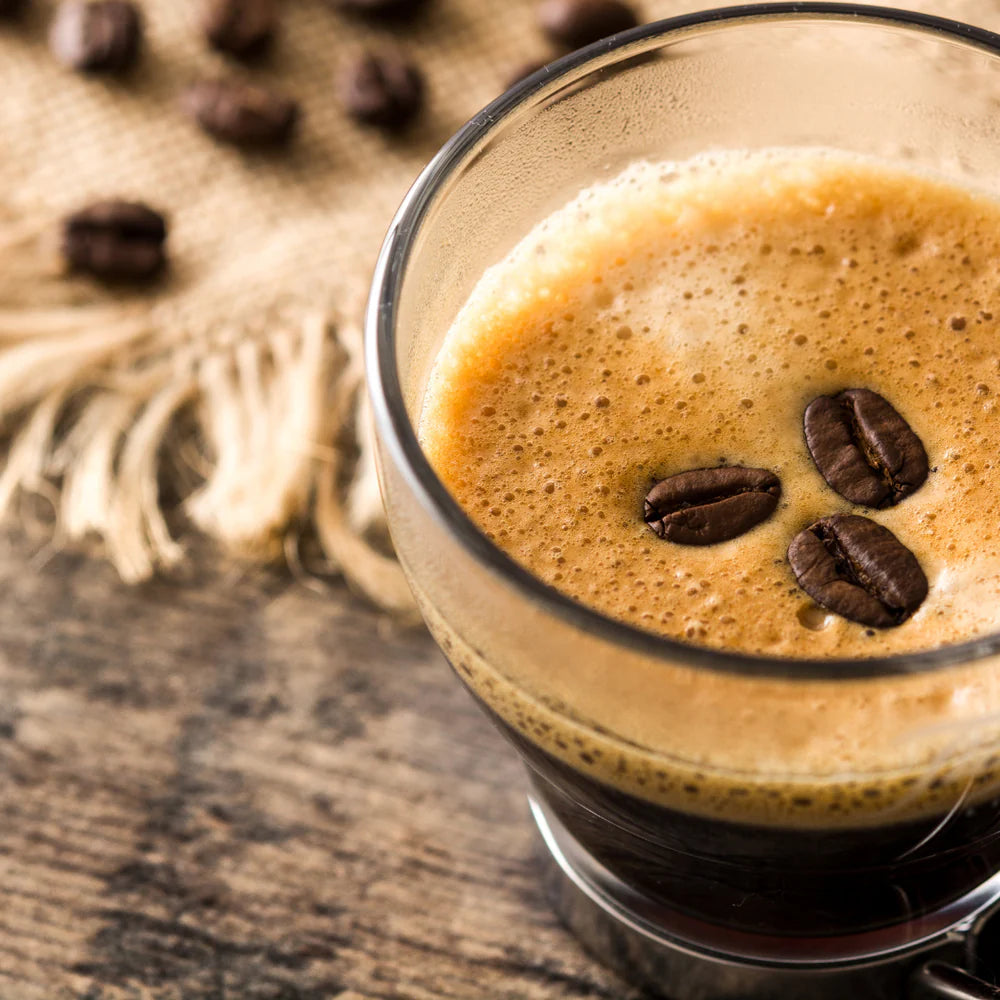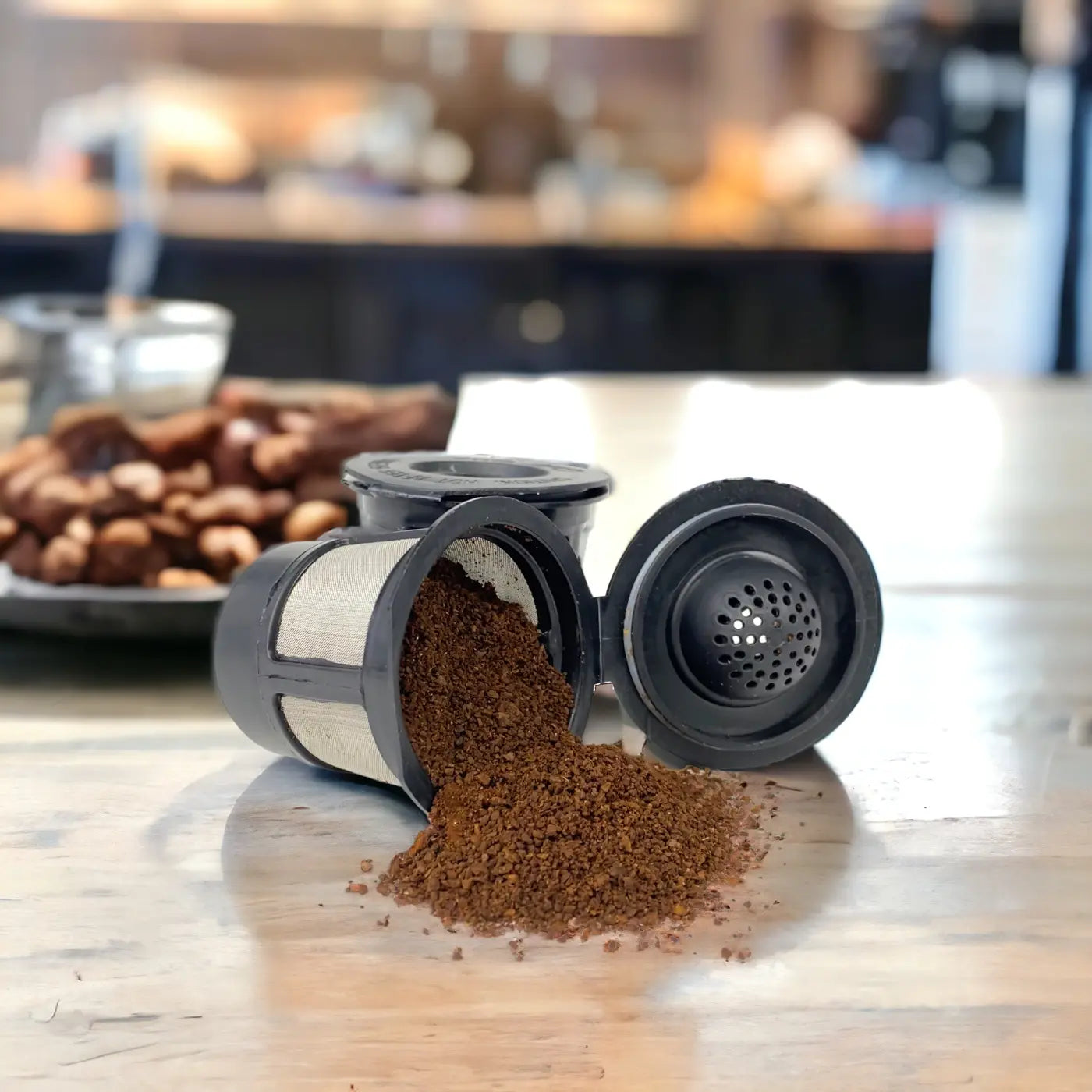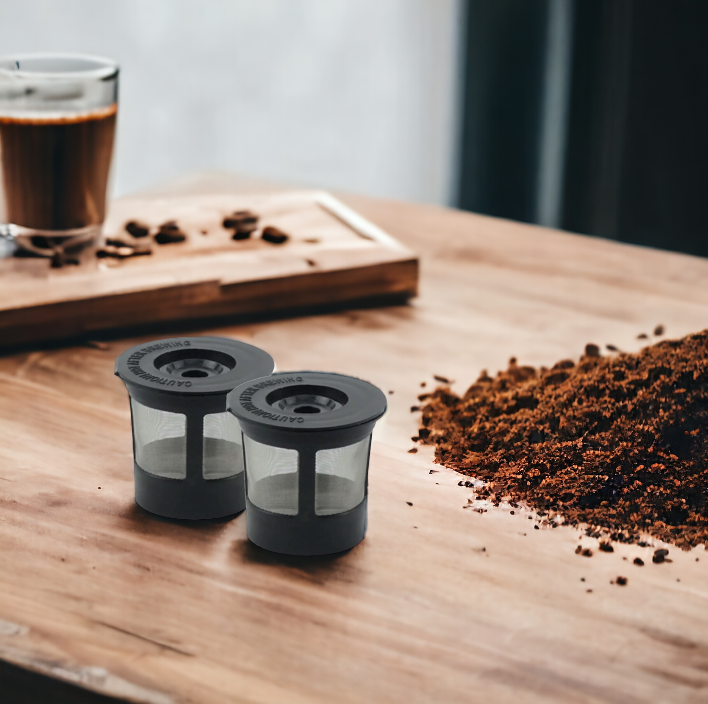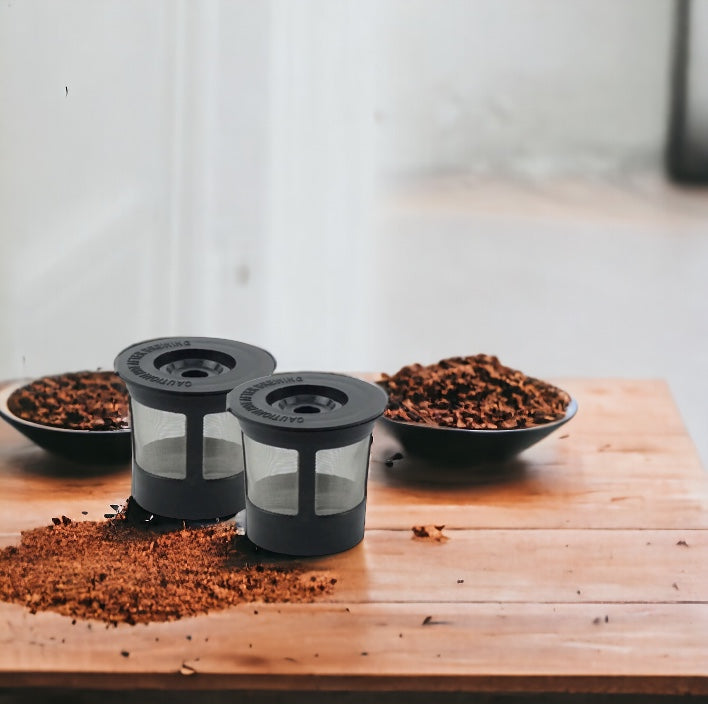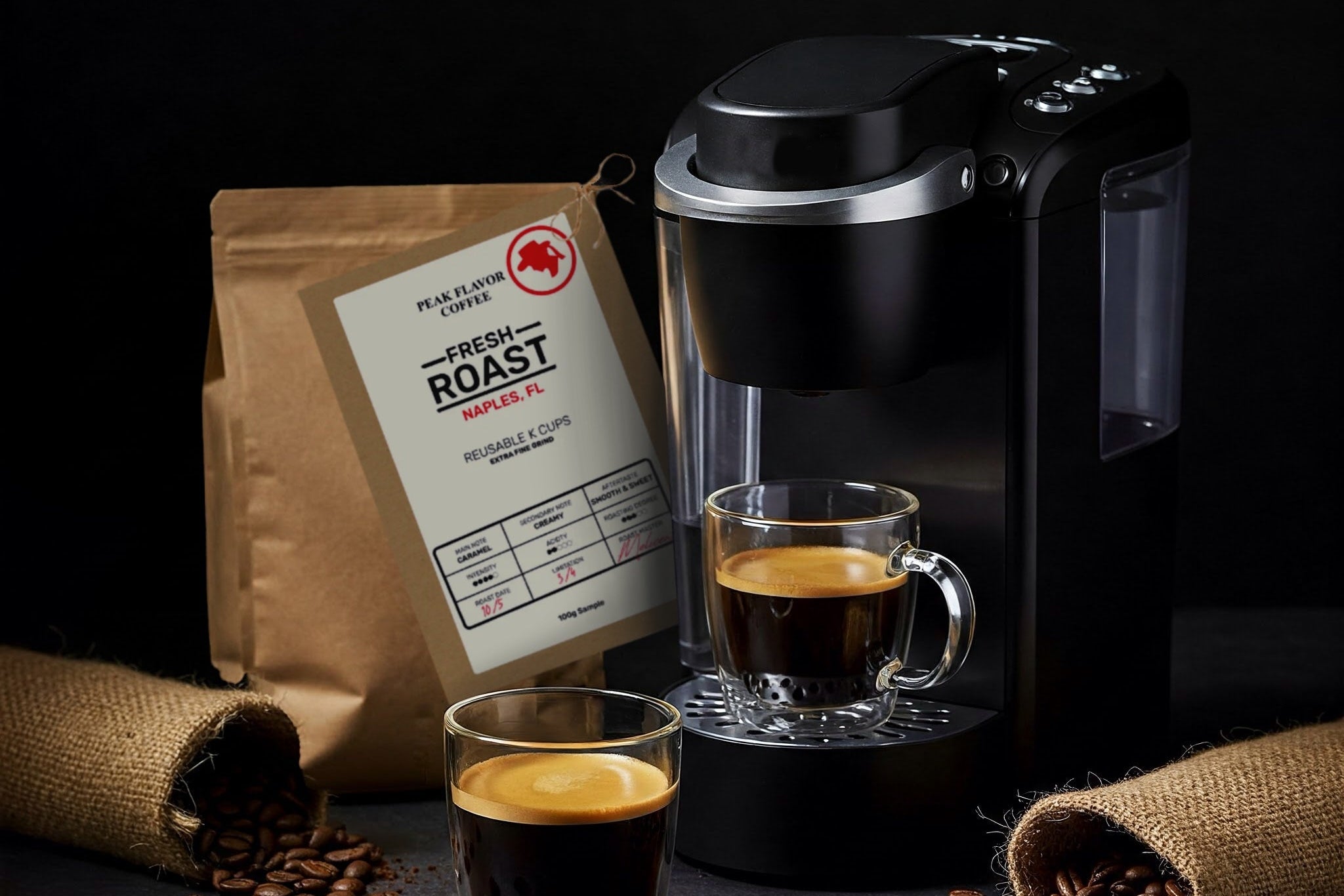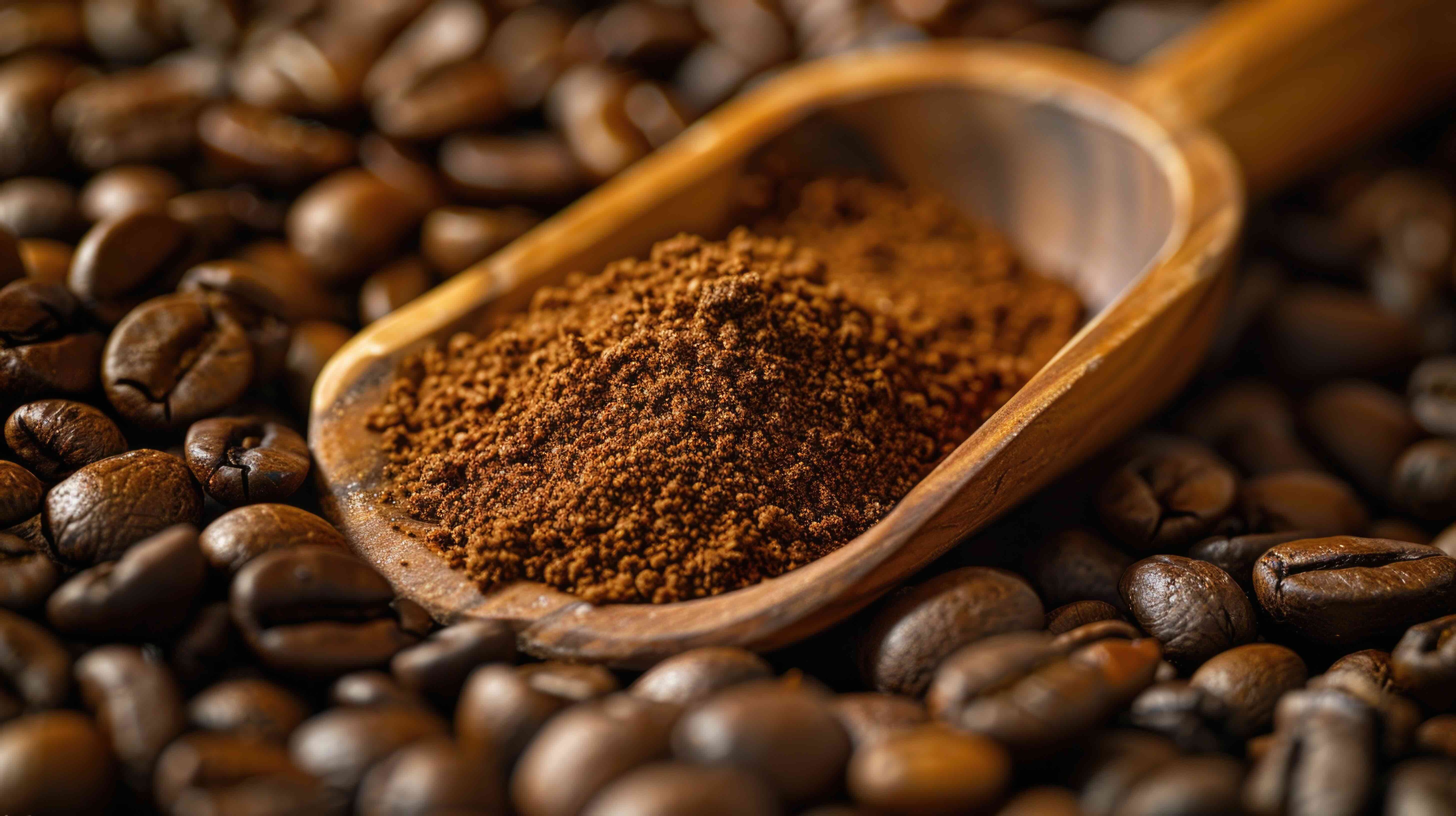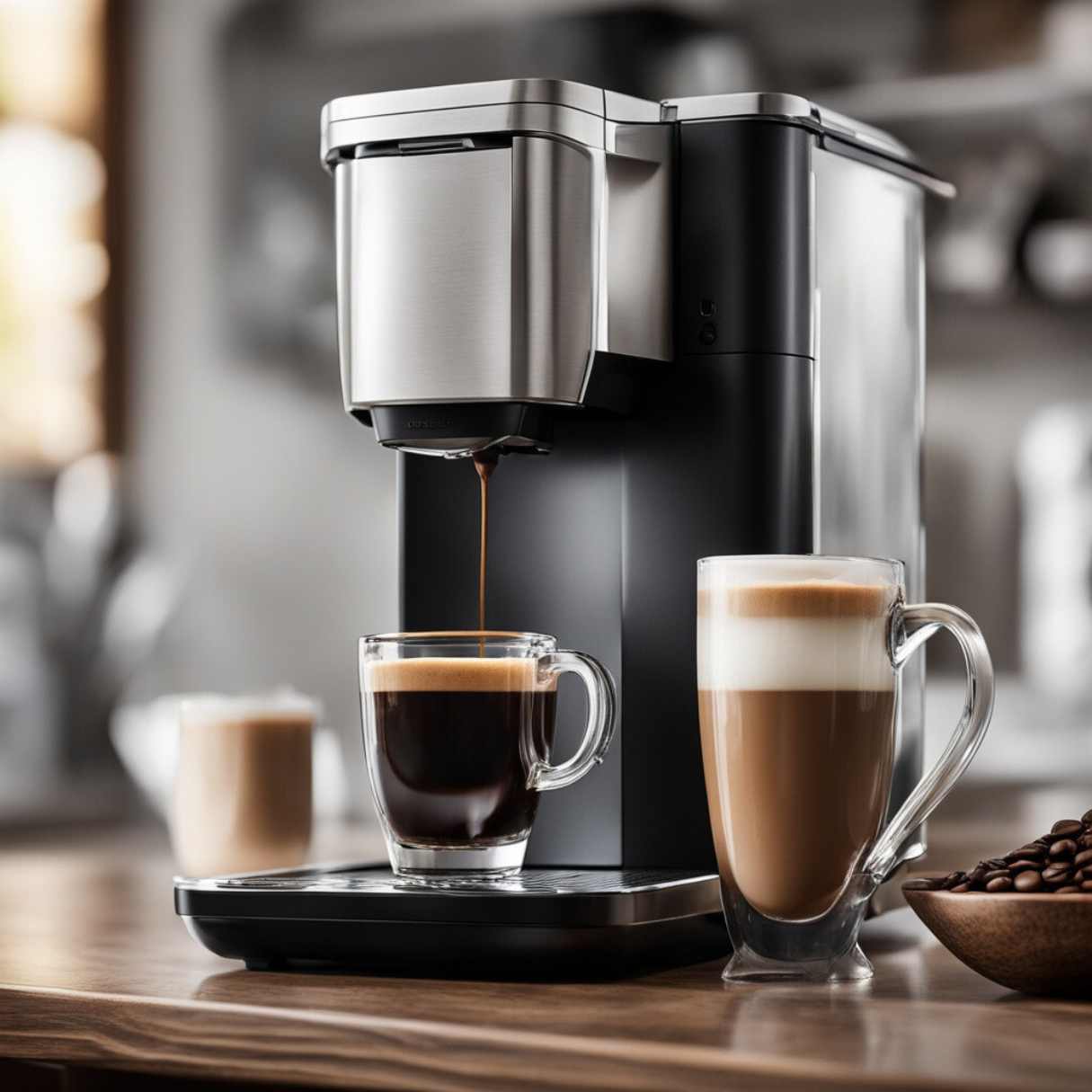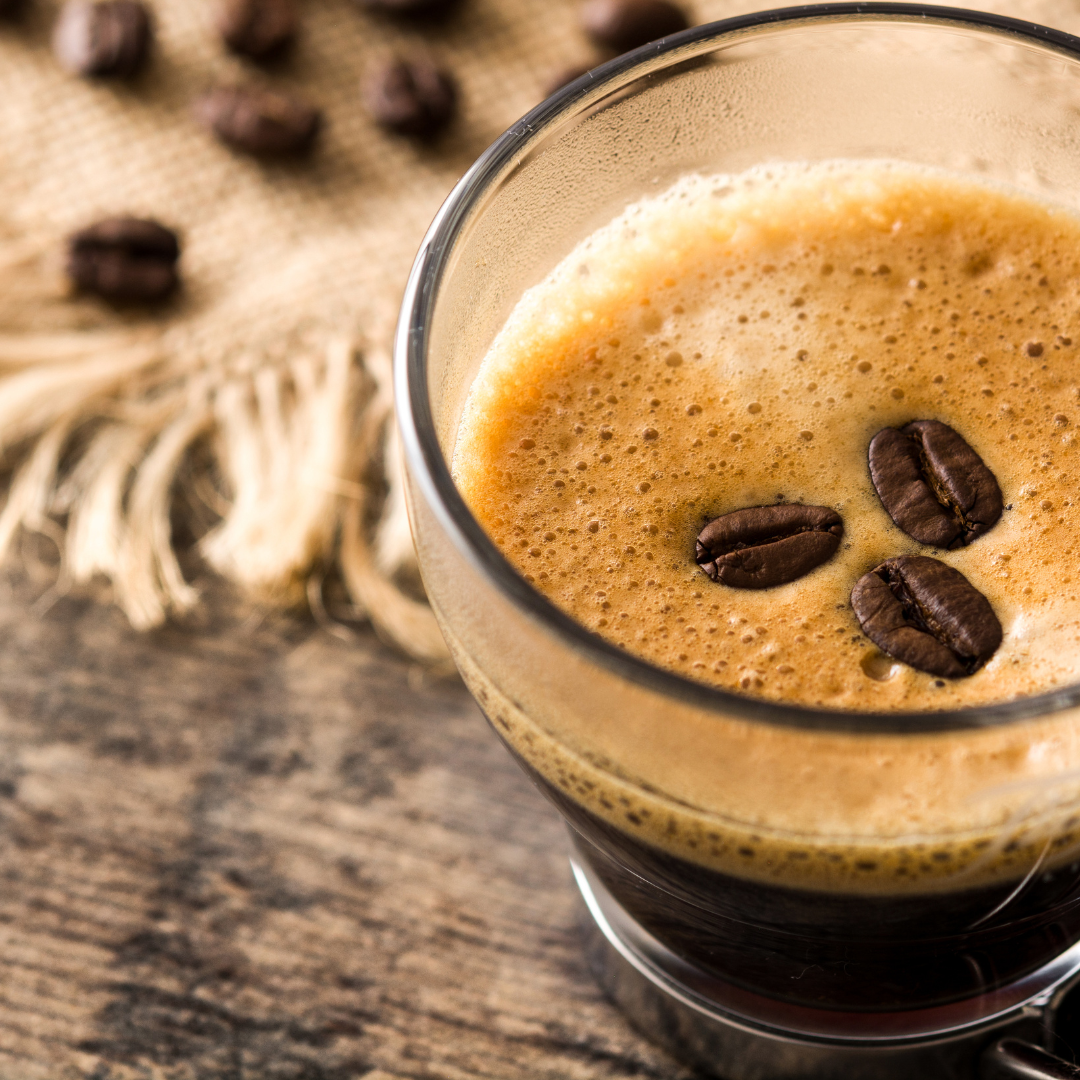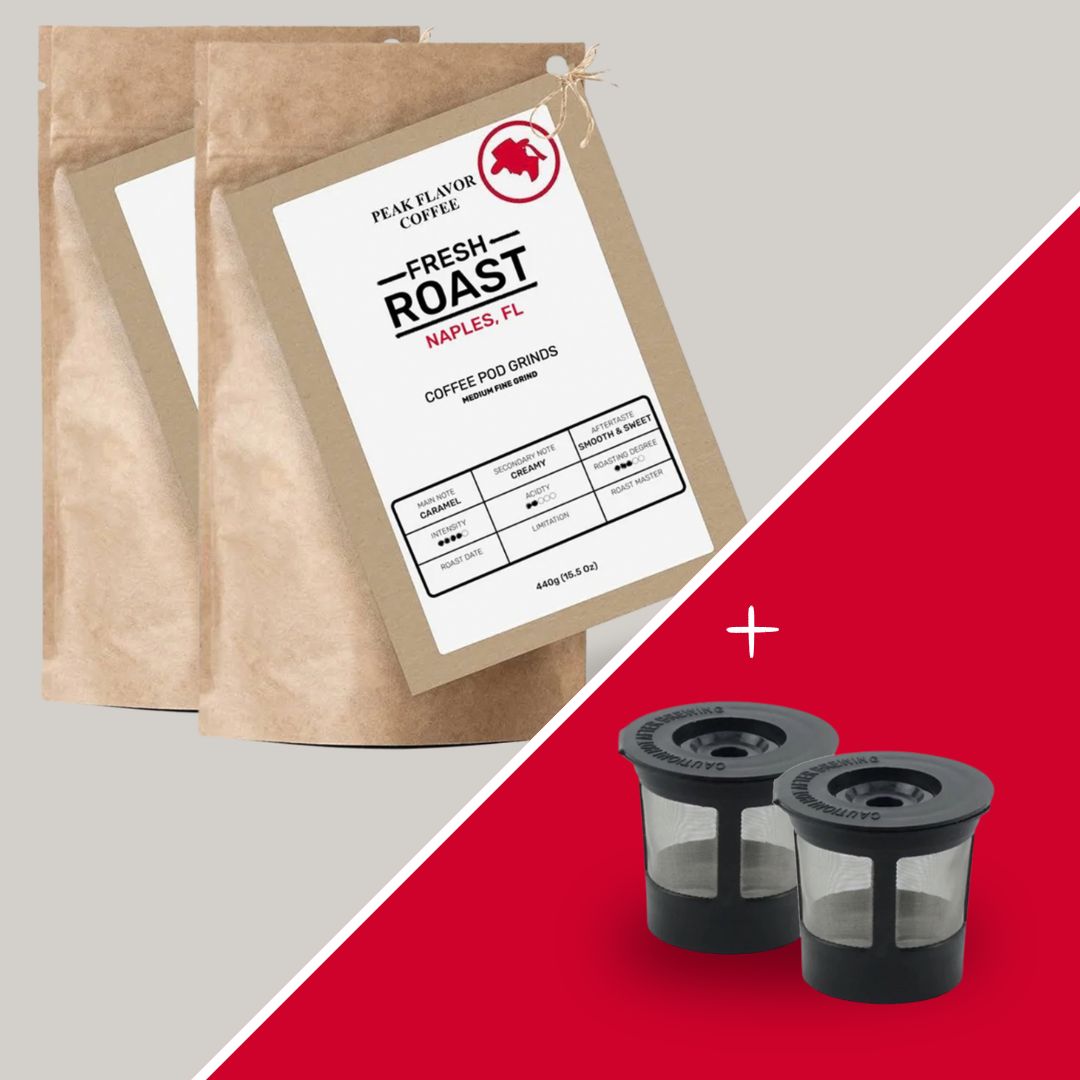What’s the Best Coffee for a Keurig Coffee Maker?
(Hint: It’s Not in a Pre-packaged Pod)
Hi, I’m Melicent — founder of Peak Flavor Coffee, food science geek, and proud Keurig single serve coffee machine convert.
I bought a Keurig because I wanted a faster, easier way to brew better morning coffee. I was done with pour-overs and French presses — love them, but who has 10 minutes and a scale at 6:30 a.m.? I thought switching to K-Cups would simplify everything. What I didn’t expect was this: every pre-packaged K-Cup I tried tasted...meh (at best).
Why? Turns out those convenient little pods are never fresh, and worse — most of them use paper filters that block the natural coffee oils that carry bold flavor and brain-boosting compounds. I didn’t want just any k cup coffee. I wanted the best K-Cup coffee. So I crafted it. For you to discover.
Let me walk you through what makes Peak Flavor Coffee the best coffee for your Keurig — especially if you’re using a reusable K-Cup with a metal mesh filter (which you absolutely should be, and I’ll explain why).
Enjoy your k cup coffee,
Melicent
Bean Origin: Flavor and Function from the Ground Up
Let’s start where all great coffee begins — the bean. Specifically, the right kind of bean from the right kind of place.
Why Bean Origin Matters?
The best K-Cup coffee isn't just about taste. It's about energy. Focus. Mental clarity. That's where high-elevation, single-origin Arabica beans shine.
We source beans grown above 1,200 meters in regions like Colombia, Brazil and Honduras. Why so picky? Because these beans are naturally richer in chlorogenic acids and caffeine — the dynamic duo of brain fuel.
Chlorogenic acids (CGAs) are antioxidants with neuroprotective effects. They help with focus, memory, and cognitive function. CGA's in coffee have the ability to reduce oxidative stress in the brain and modulate neurotransmitter pathways linked to alertness and mood. Read more about the emerging health effects of coffee constituents.
Found naturally in high-quality Arabica beans, CGAs support better blood flow to the brain and help regulate glucose metabolism—two key factors in sustained mental clarity. While roasting reduces CGA levels, medium roasts preserve more than darker profiles.
That’s why choosing fresh, properly roasted coffee isn’t just about taste—it’s a science-backed way to fuel your mind and protect your long-term brain health.
Caffeine boosts alertness, reaction time, and endurance — and high-altitude beans contain more of it per gram than lowland varieties. That’s because cooler temperatures and slower maturation at higher elevations lead to denser beans with more concentrated compounds, including caffeine.
Once consumed, caffeine blocks adenosine receptors in the brain — the signals that tell your body it’s tired — resulting in heightened wakefulness and sharper focus. It also increases dopamine levels and stimulates the release of adrenaline, enhancing mood and physical performance.
For busy mornings or mentally demanding days, caffeine from high-elevation coffee delivers a cleaner, longer-lasting energy boost. Learn more about caffeine and brain health.
Plus, coffee beans cultivated at high elevation taste better: naturally sweet. Cooler growing temps slow the maturation process, building richer, more complex flavor notes and allow for more fruit sugars to develop. More natural sugars provide the basis for more caramelization during the roast. Think: floral, fruity, chocolatey, and caramel instead of flat or bitter.
That’s why every Peak Flavor blend starts with high-elevation Arabica. It’s the healthiest and tastiest foundation for your morning fuel.
Roast Level: Light Enough to Energize, Rich Enough to Enjoy
Not all roasts are created equal — especially when it comes to unlocking both taste and bioactive benefits.
Why We Roast Medium for Best K Cup Coffee?
Medium, slow roasts preserve more of the good stuff — caffeine, chlorogenic acids, and antioxidants. But go too light and you get grassy, sour flavors. Too dark and you burn off the nutrients (and your taste buds).

Medium roasts hit the sweet spot for both health benefits and flavor. Lighter roasts retain more caffeine and chlorogenic acids—two key compounds linked to alertness and antioxidant activity—because they’re exposed to heat for less time than darker roasts.
While caffeine is relatively heat-stable, it does degrade slightly in prolonged roasting. Chlorogenic acids are far more sensitive, breaking down rapidly at higher roast levels.
Medium roasts preserve these bioactive compounds while also smoothing out the grassy, acidic notes found in very light roasts. The result? A balanced cup with energizing benefits, robust antioxidant support, and none of the bitterness. Read more about roasting profiles and CGA's.
This roast level gives you the mental lift you need without sacrificing richness or depth.
And here’s the kicker: we roast-to-order, so your coffee arrives within days of being roasted. Most pre-packaged K-Cups? They’ve been sitting on shelves for months. By the time you brew them, half the flavor is already gone.
If you’re chasing the best K-Cups experience, freshness isn’t optional. It’s essential.
Coffee Oils: Let Them In (Why Reusable K-Cups Rule)
Here’s where things get a little nerdy — and delicious. Ever notice how some coffee just feels thin in your mouth, even if it smells great? That flat, watery finish usually comes down to one thing: missing coffee oils.
What Makes Coffee for Keurig Feel Rich?
The Power of Natural Coffee Oils
Coffee oils are the unsung heroes of a rich, satisfying cup. They’re packed with the heavy-hitting flavor compounds formed during the Maillard reaction — the same complex chemical process that makes toasted bread smell amazing and roasted nuts taste irresistible. These oils carry much of the rich taste, depth, warmth, and mouth-coating body that make coffee taste like coffee, not just brown water.
But there’s more than just flavor at stake. Coffee oils also contain powerful diterpenes, like cafestol and kahweol, which have been shown in studies to support brain health, reduce inflammation, and even enhance the body’s natural detoxification enzymes. They’re part of what makes coffee more than a caffeine delivery system — they turn it into a functional beverage that energizes both body and mind. Read the science on Cafestol and Kahweol.
Here’s the catch: paper-filtered K-Cups block those oils completely. The paper traps them, leaving you with a cup that might be convenient, but falls short on both richness and nutritional punch.
The solution? Use a reusable K-Cup with a stainless steel mesh filter. Unlike paper, the metal mesh allows those flavorful, nutrient-rich oils to pass through and into your mug, where they belong. This means:
✅ A fuller, more satisfying mouthfeel
✅ A bolder, more complex aroma
✅ The functional benefits of unfiltered coffee
It’s kind of like the difference between fresh-squeezed orange juice and the shelf-stable stuff from concentrate. Both are technically juice, but one is bursting with flavor and life — the other just...gets the job done.
Once you taste a cup brewed with real coffee oils intact, you’ll understand why we say: paper filters are for napkins — not your morning brew.
Grind Size: The Sweet Spot for Keurig Brewing
Now, let’s talk grind size for reusable coffee pods with a metal mesh filter — an often-overlooked hero in the quest for better K-Cup coffee.

Why 450 Microns Matters?
Keurig machines don’t reach espresso-level pressure or temps, so extraction efficiency is limited. You need a grind that:
- Is fine enough for full flavor and caffeine extraction
- Is coarse enough to prevent clogging and bitterness
After a ton of testing (and way too many underwhelming brews), we landed on a 450-micron grind with 98% particle uniformity.
That’s geek-speak for: every particle is the same size, which means even extraction, smooth flavor, and no sludge in your cup. Pre-ground supermarket coffee? Not even close.
If you’re using a reusable K-Cup, grind quality is everything. That’s why we pre-grind to the perfect size just for Keurig users. No blade grinder guesswork required.
The Power of Freshness
Let’s be clear: fresh coffee = better coffee.
Why Fresh Roast Dates Matter More Than “Best By” Dates
If you’ve ever brewed a pre-packaged K-Cup and thought, “This tastes...fine?” — there’s a reason. Most store-bought K-Cups were roasted months ago, ground long before that, and sealed in oxygen-flushed packaging to survive warehouse life. By the time they reach your Keurig, nearly all of the volatile aroma compounds — the molecules responsible for fresh coffee’s flavor, fragrance, and complexity — are long gone.
These compounds start to degrade just days after roasting. Within 2–3 weeks, most of the delicate nuance that makes coffee taste vibrant, layered, and alive has flattened out into something dull, bitter, or vaguely nutty. No matter how fancy the beans once were, old coffee is old coffee.

That’s why Peak Flavor Coffee is always roasted to order. We grind it specifically for your Keurig’s reusable K-Cup and ship it within days — not weeks or months. Every bag comes with a clear roast date, not a vague “best by” stamp designed to hide how stale it really is.
Combine a fresh roast with a reusable K-Cup’s metal mesh filter, and you get something no pre-filled pod can match: a brew that’s alive. You’ll smell it the moment you hit brew — those bold aromas, rich oils, and naturally sweet notes that only fresh coffee can deliver.
In short, fresh + reusable = magic. It’s the difference between reheated drive-thru coffee and walking into your favorite café when the barista just pulled a new roast from the grinder. One wakes you up. The other just fills a cup.
So, if you’ve been brewing stale, shelf-stable pods, the difference in aroma alone will blow your mind.
One More Thing: Dose It Right
Your Keurig isn’t magic — it’s just a brewer. If you want the best K-Cup coffee, you’ve got to give it the right amount of coffee.
Use 10–12 grams of ground Peak Flavor coffee per brew (that’s about 2 tablespoons). That’ll land you in the ideal range of 100–120 mg of caffeine per 8 oz cup — the scientifically proven sweet spot for mental clarity and productivity.
What’s the Best Coffee for a Keurig Coffee Maker?
So, what’s the best coffee for a Keurig coffee maker? It’s definitely not tucked inside a stale, plastic pod. The best brew happens when you ditch the disposable and switch to a stainless steel reusable K-Cup filled with fresh, purpose-crafted coffee.
Peak Flavor Coffee is made specifically for Keurig users who want more than convenience — they want real flavor and real fuel. We use only high-elevation Arabica beans sourced from regions like Colombia, Brazil & Honduras, where the slower-growing climate produces beans naturally rich in chlorogenic acids, antioxidants, and bold, nuanced flavor. Our medium roast strikes the ideal balance between brightness and depth, preserving caffeine and polyphenols without crossing into bitterness.
We grind our coffee to a precise 450-micron particle size for optimal Keurig extraction and zero clogging, then roast-to-order and ship fresh — always within 14 days of roasting, never months old. Because we skip the paper filter and embrace the full-spectrum flavor benefits of metal mesh, every cup delivers the natural coffee oils that carry rich aroma, creamy mouthfeel, and brain-boosting compounds like cafestol and kahweol.
Combined with the ideal caffeine dose for mental clarity and energy, it’s coffee designed to energize the body and sharpen the mind — no barista tools required. If you crave café-level coffee without the specialty routine, Peak Flavor gives you the ritual without the ritual: fast, flavorful, and functionally energizing in every single sip.
Shop Peak Flavor Coffee
Upgrade your reusable K-Cup and give your Keurig the coffee it deserves.
Keurig Coffee Hugs,

